Croatian Traditions: Planting Christmas Wheat on Saint Lucy's Day
December 13, 2022 - Croatia is a largely Catholic country, and as such it has many traditions tied to saints, including various Christmas traditions. One of them is Saint Lucy's Day, which is today, on the 13th of December. The Croatian tradition for this day includes planting a little pot of Christmas wheat, which will serve as part of the decorations for the Christmas table.
As Večernji wrote, although pots of wheat can be bought for almost symbolic amounts at markets and in all retail chains, the process of planting wheat is part of a tradition that takes most Croatians back to their childhood, family gatherings and the immense joy of waiting for Christmas, which, unfortunately, seems to be slowly disappearing.
The planting of wheat in the Croatian Christmas tradition carries a deeper meaning: besides being a symbol of the birth of new life and well-being, it invokes and blesses the harvest. The belief is that the appearance of the wheat (colour, density, height) would predict what the crop in the following year would be like. In some regions, in addition to the Saint Lucy's Day, wheat is traditionally sown on Saint Barbara's Day, December 4, following a different process as well. The common goal, though, is for the Christmas wheat to grow tall and dense to be proudly presented on the Christmas table, and many people keep it until the New Year.
Although growing it should be a simple process, it seems that there are a few tricks to growing a fruitful, dense pot. That is one of the reasons why many Croatians decide to buy ready-made wheat a day or two before Christmas. Agronomist Sunčica Dombaj shared a few tips. She mentioned insufficient seed germination and growth in unfavorable conditions as the main cause for thin or low wheat. "It would be ideal to keep the wheat at a moderate temperature in the room by the window, that is, in a bright place, and not to overdo it with watering", she emphasized, adding that the wheat should be watered daily, but moderately, by spraying it with a sprayer or simply misting it with your hands soaked in water. Otherwise, the leaves will turn yellow and mold will catch on the wheat. It is important that the container in which you put the wheat is not too deep - some plant it on a plate.
How to plant your own Christmas wheat
Put a layer of garden soil in a shallow container and gently press the germinated wheat seeds in and spray daily. In addition to light, wheat also likes heat, but do not place it directly next to a heat source, radiator or stove. Wheat grows well on cotton wool - many people use this trick. Put a layer of cotton wool about one centimeter thick in a bowl, spray it with water and spread the grains of wheat over it. The method of care is the same as for wheat that is planted in soil. Planting wheat is a perfect activity to do with children, who will then eagerly monitor and follow the progress of the wheat throughout the 12 days before Christmas.
What should you pay particular attention to when planting wheat?
Wheat, regardless of whether it is planted on an earthen substrate or a cotton substrate, should not be sown too thickly, because then a lot of sprouts pop up and elongate in search of a place to grow.
After it germinates and starts to grow, how do you keep wheat green until the New Year?
Wheat's greatest ally in maintenance is moisture. Sunčica advises that instead of watering, wheat should be moistened by spraying and that the soil should not be allowed to dry out. Also, wheat should by no means be supplemented.
Did you know that you can eat the green part of wheat?
Many people grow wheat this way throughout the year. The reason for this is its health benefits in the daily diet. You can also use it in the preparation of your meals - simply cut the green part with scissors and put it in a salad or mix it in yogurt or some kind of drink.
For more, make sure to check out our dedicated Lifestyle section.
Exploring Croatian Recipes: Christmas Baking - Orascici (Little Walnuts)
December 11, 2022 - Christmas baking in Croatia starts as soon as December rolls around. The goal is for the Christmas dessert table to be as bright and colourful as possible, full of cookies and cakes and everything in between. Boxes of various little treats are gifted to family, freinds, nieghbours, brought to office parties, schools and kindergartens. Sweet treats are a key component of Croatian Christmas traditions. They bring a lot of joy to both the visitors and the hosts, and the process of baking them is the perfect tool for families to come together and enjoy moments of bonding. Today we explore one of the oldest Croatian recipes to find itself on Santa's list - orascici.
Orah means walnut in Croatian. While walnuts are the main ingredient used to make them, the diminutive orascic (little walnut) refers to the shape of these treats. The cookies are baked in a special type of metal mold which has the shape and the texture of a walnut half. The halves are then filled and glued together to form a whole nut. It is slightly ironic that they are called little though, since most of them turn out bigger than actual walnuts. They are incredibly fun both to make and look at, and no matter how many there are, always the first kind to vanish from the plates.
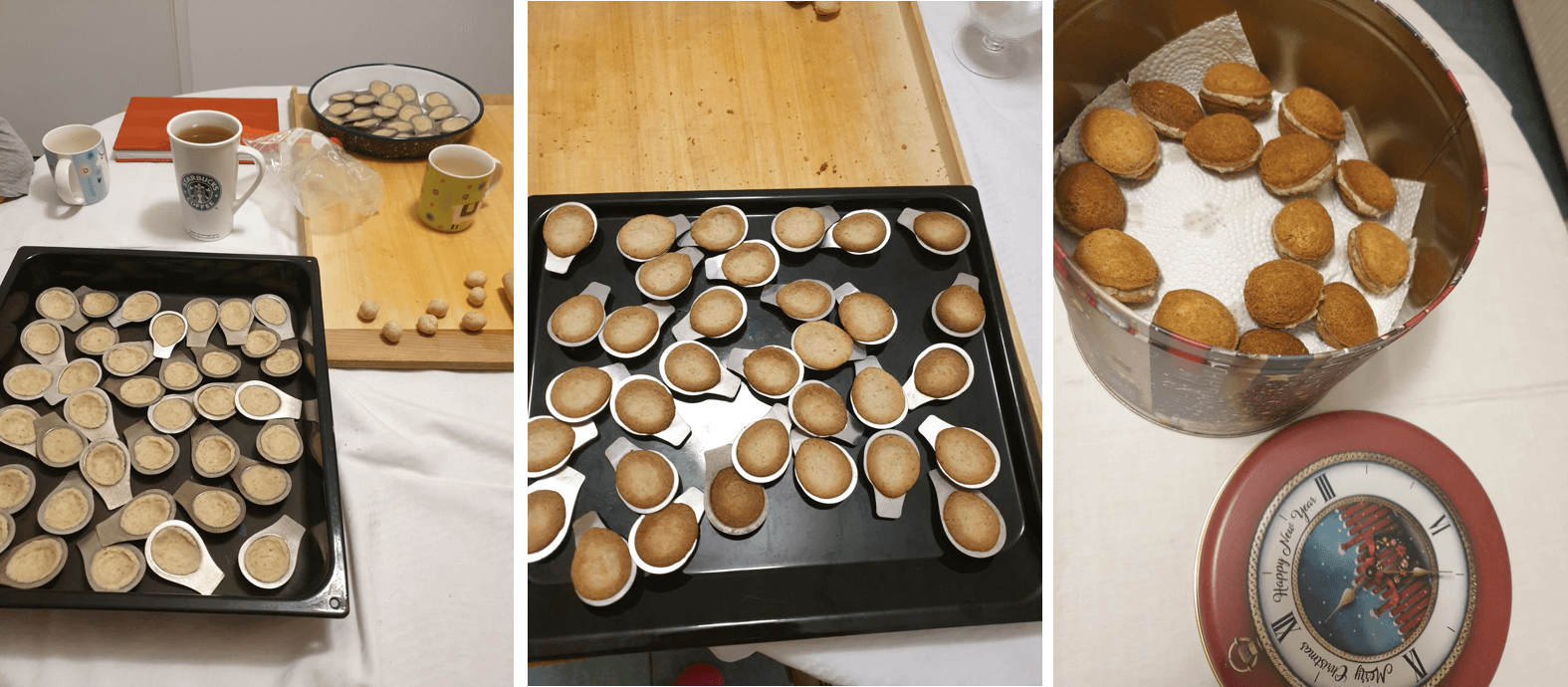
Ingredients:
Cookies
- 300 g flours
- 125 g butter
- 100 g lard
- 100 g ground walnuts
- 150 g icing sugar
Filling
- 100 g butter
- 200 g icing sugar
- 200 g ground walnuts
- 50 ml milk
Instructions:
1 Soften the butter and combine all the ingredients into a soft dough.
Grease the molds and dust them with flour to create a barrier, otherwise the cookies might stick.
Fill out the metal molds, leaving an indent in the middle (follow the shape).
Bake the cookies at 180 °C until golden (they will rise once they start baking - when they fall back down they're ready to go).
Unmold the cookies while they're still hot.
2 Soften the butter and combine the ingredients for the filling, using warm milk to bind them.
Fill out both halves and stick together to create walnuts.
* This is the traditional recipe, using traditional techniques and ingredients. The metal molds can be found at most Croatian markets, baking and vintage shops, as well as online. If you cannot find them, you can cut out any shape and use the same filling to create sandwich cookies of the same taste. Butter can be used instead of lard.
Pro-tip: orascici are best made up to 10 days in advance and stored in tin boxes.
For more, make sure to check out our dedicated Lifestyle section.
Croatian Lighting Design for Vatican Nativity Scene, Controlled from Pula
December 6, 2022 - Few have the opportunity to come up with a solution for lighting the Vatican nativity scene with 18 life-size statues that adorn St. Peter's Square. This year, that honour went to the Pula company specialising in lighting design, Skira.
As HRT / Poslovni report, illuminating the scene of the birth of Jesus in the main Vatican square with the help of seventy invisible lighting fixtures is a real technological feat.
"I suggested making a circle in the floor of the stage, cutting it all into an ellipse, painting it matte black, and hiding all the spotlights underneath," explained Dean Skira, lighting designer.
It was also necessary to coordinate the light with the music to tell the story of the birth of Jesus. "We created the scenography so that the children appear first, then everything else, sculptures of people who are in the story around the birth of Jesus," explained Skira.
Preparations for this demanding project took months because each reflector has its own effect. "There is a timeline of how the effects take place, and various effects are superimposed that rotate in real-time," said Božidar Pustijanac, the designer.
It is unbelievable that the lighting of the Vatican nativity scene can be controlled from Pula, all using just a mobile phone. "Each statue can be viewed separately, each reflector is separate, now everything is turned off because it's daytime, I can light each separately, I can do whatever I want," said Godvin Poropat, the designer.
The lighting was ceremoniously switched on the day before yesterday, and the Pope himself received the representatives of the Pula company. "I must say that it is an experience that goes beyond the professional segment of my life. It is a very significant spiritual moment that happened when I met the Pope and when he shook my hand. I am very proud that we Croats had the opportunity to participate in such an important event", emphasised Skira.
This is an excellent recognition for the Pula company, which already has forty international awards for projects worldwide.
For more, make sure to check out our dedicated Business section.
Croatian Festive Tourism Numbers Allows for Dose of Optimism
January the 8th, 2022 - Croatian festive tourism numbers have allowed the country a little optimism for what might be to come this tourist season when the warmer months roll around. Let's have a look at the numbers.
As Marija Crnjak/Poslovni Dnevnik writes, Croatian festive tourism numbers are promising, as they signal that Croatia had three times more tourist traffic than it did the year before, but it is still a quarter less than before the pandemic, according to statistics released by the Croatian National Tourist Board. In the period from December the 24th, 2021 to January the 6th, 2022, we had 144 thousand arrivals and 424 thousand overnight stays, which is 190 percent more in overnight stays than last winter.
Most overnight stays on the coast were realised in Istria, Kvarner and in Split-Dalmatia County, while on the continent most overnight stays were realised in Zagreb, Krapina-Zagorje and Medjimurje counties. Looking at individual destinations, most overnight stays were in Zagreb, Opatija, Rovinj, Dubrovnik, Split and Zadar, while most overnight stays, looking at markets, were realised by domestic guests, followed by the Austrians, Slovenes and Germans.
"The Croatian festive tourism numbers are optimistic and confirm the market position of our country as a quality and well-prepared destination. Numerous Croatian cities such as Opatija, Dubrovnik, Split, Osijek or Zagreb had prepared interesting content that could be enjoyed in compliance with all of the current epidemiological measures,'' said the director of the Croatian Tourist Board, Kristjan Stanicic. The CNTB has a target of 90 percent of guests from pre-pandemic 2019 for this year.
Observing the tourist traffic down on the coast, during the Christmas and New Year period in the Adriatic counties there were 91 thousand arrivals and 298 thousand overnight stays, while on the continent, together with the City of Zagreb, there were 54 thousand arrivals and 126 thousand overnight stays.
"Over the Christmas and New Year period, we've recorded excellent results, which will certainly contribute to the overall positive impact of tourism on final revenues in 2021, as well as on the entire Croatian economy. This year, our focus is on a year-round, sustainable tourist offer, but also to maintain the image of a safe destination that we built last year. That is why it's crucial to get vaccinated against the novel coronavirus, because the 2022 tourist year will also take place in the circumstances of a pandemic and I'd like to appeal for the additional responsibility of the entire tourism sector,'' concluded Minister of Tourism and Sport, Nikolina Brnjac.
For more, check out our dedicated travel section.
Bogojavljenje (Epiphany) - Three Kings Day in Croatia
January 6, 2022 – Thursday 6 January is Bogojavljenje (Epiphany). Three Kings Day in Croatia is a national holiday. It is also a day marked by its own historic and very distinct traditions.
With the fireworks of New Year's Eve almost one week behind us, Christmas already feels like it was quite a while ago. But, with church bells ringing out across the land, Three Kings Day arrives on 6 January to remind us in Croatia that we're not quite finished yet.
Commonly known as Bogojavljenje (Epiphany), Three Kings Day is highly significant in the Catholic calendar. It is also a day of limited but extremely distinct tradition in Croatia. Understanding these traditions requires a comprehension of some Bible scriptures. More so, perhaps, than the traditions of any other feast or celebration days connected to Christmas.
What is Bogojavljenje (Epiphany) - Three Kings Day in Croatia?
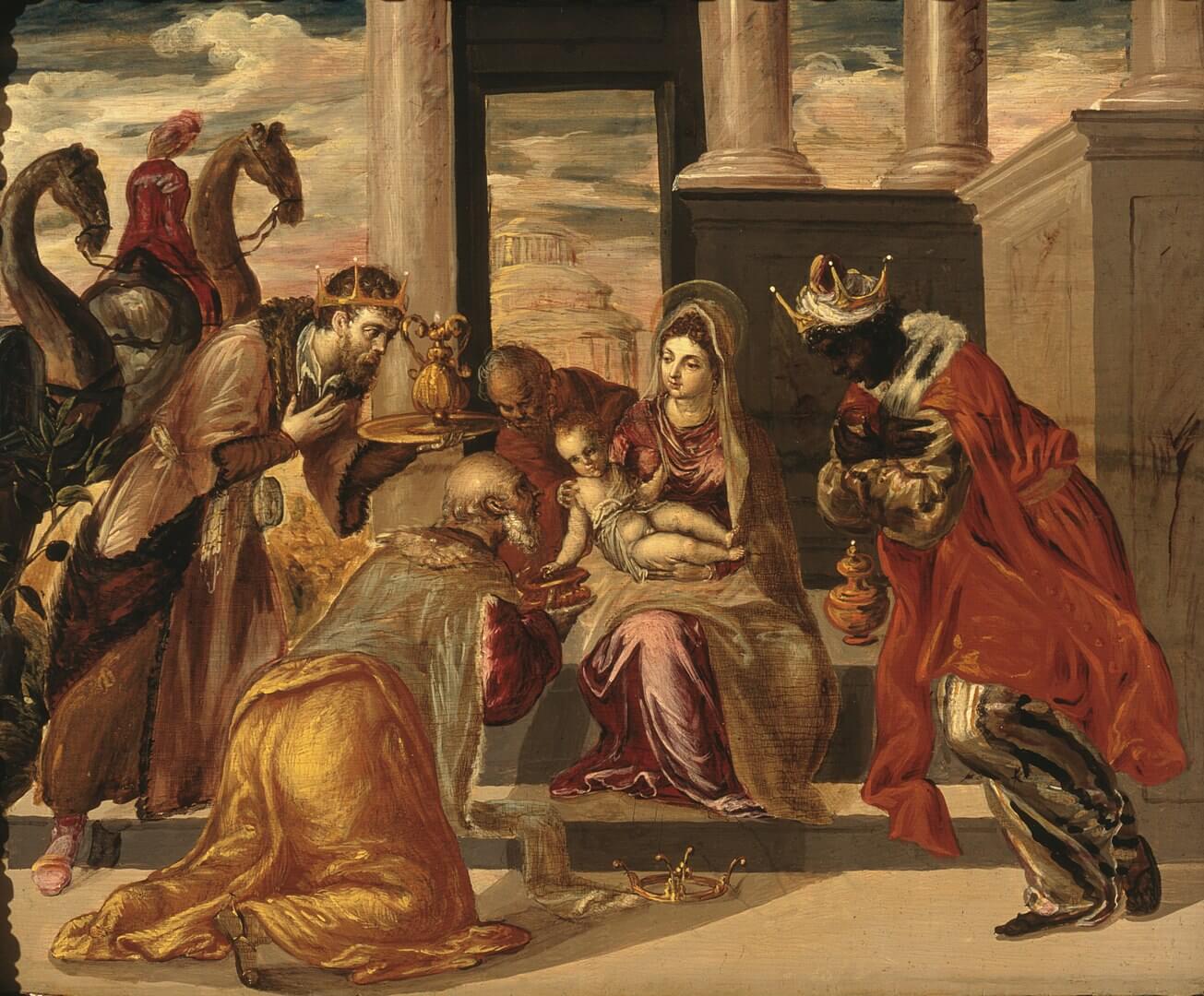 Adoration of the Magi by El Greco
Adoration of the Magi by El Greco
January 6 is celebrated in the Catholic church as both Epiphany and the day of the Three Kings. Epiphany is the revelation of Jesus as the Son of God to those outside Judaism. Three Kings Day is when the three kings – otherwise known as Magi or the three wise men - visit the newly-born Jesus and present gifts to him.
These could look like two different celebrations that just happen on the same day. But, in fact, they are not at all separate. Although, their connection does take some explaining. And the traditions the day creates in Croatia takes even more explaining.
Who are the Three Kings aka the Three Magi?
 The Magi, celebrated on Three Kings Day in Croatia
The Magi, celebrated on Three Kings Day in Croatia
If you've seen a nativity scene or any Christian art related to Christmas, you'll be familiar with the image of the Three Kings. But, actually, they are not in the Bible. What the Bible says is, Magi arrive in Jerusalem at the time of Jesus's birth. They ask the location of the 'king of the Jews' so they can pay tribute. No number is allocated to the Magi.
However, the Bible details that the Magi carry with them three gifts for Jesus – frankincense, gold and myrrh. It is from this number of gifts that the embellished western tradition presumes the number of Magi. In the eastern church, the number of Magi is actually set at 12!
Their number is not the only way their story has been enhanced. Over the years, the Magi have been given very different places of origin. In some of the first embellishments, the kings are said to represent lands of Arabia, Persia and India. But, as Christianity spread, the story changed – perhaps to be either more inclusive or reflect self-importance. Later versions have the kings representing Asia, Africa and Europe. The Bible actually says all three arrive from the east (Africa and Europe are obviously not east of Judea.)
From the 8th century we find the first evidence of the Three Kings being given names - Balthasar, Melchior, and Gaspar (or Casper). In the Bible, the Magi follow a star to reach Jerusalem at the time of Jesus birth. But, they stop and ask directions. Three Kings Day is when they finally arrive to pay tribute to Jesus.
In our celebration of Christmas, this is 12 days after the birth of Jesus Christ. And yet, in every nativity and Christmas painting, shepherds attend the scene immediately after Jesus's birth, closely followed by the Three Kings. To understand what is happening with the Three Kings and the Epiphany you need to look at the Gospel according to Matthew.
Understanding the Gospel according to Matthew
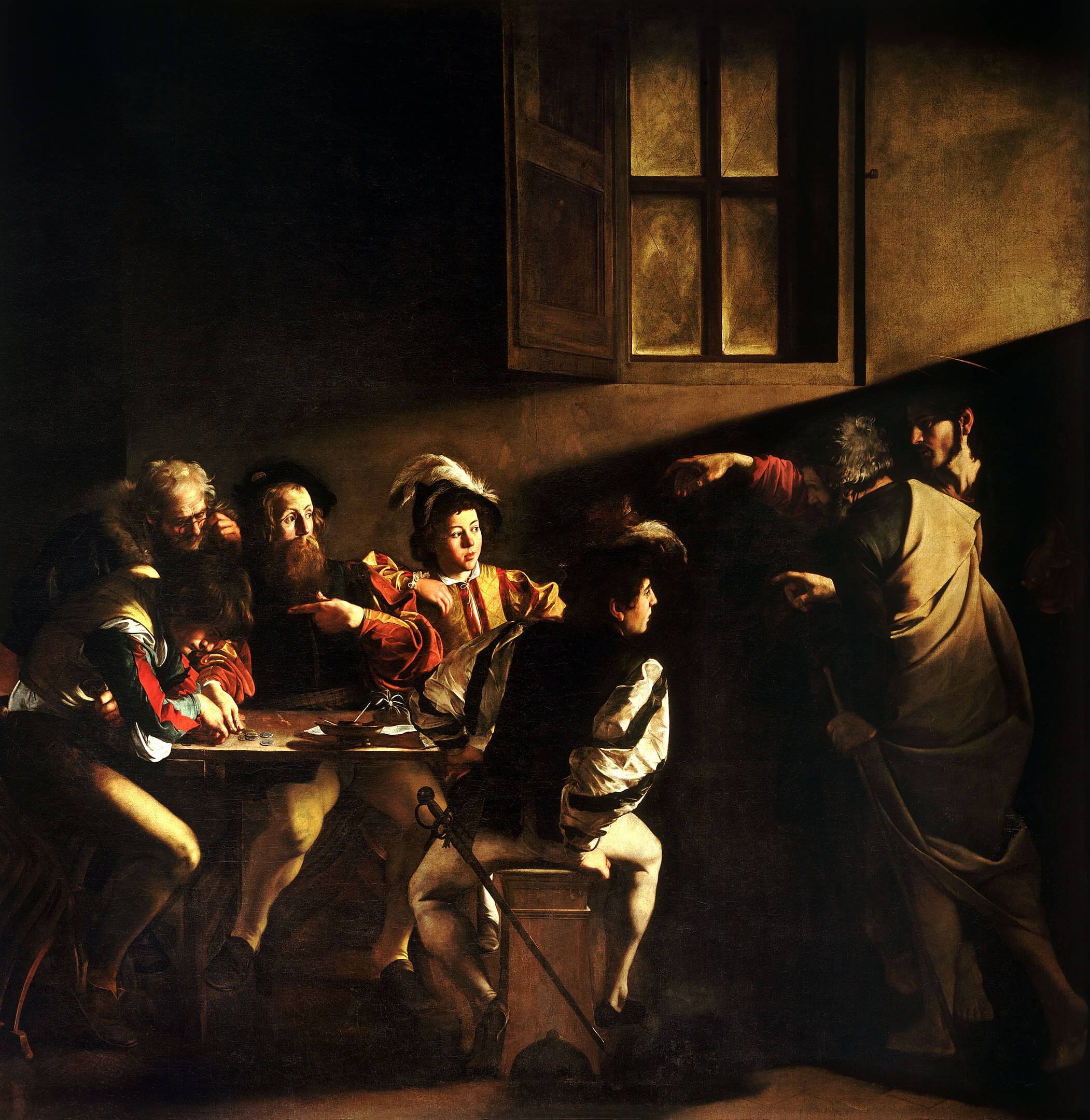 The Calling of St Matthew by Caravaggio
The Calling of St Matthew by Caravaggio
The first three books of the New Testament are Matthew, Mark and Luke. When originally written, they were not intended to be placed next to each other in a single compiled 'book'. And so, within the first three books of the New Testament, we find quite a lot of repetition, as each of these disciples recounts the life and story of Jesus.
The Gospel according to Matthew is arguably the most famous and most detailed of these books. As an example, it is the only book where we are told about the Magi visiting Jerusalem and Jesus. It is also the most Jewish of the Gospels - in structure and in language (it is originally written in Greek).
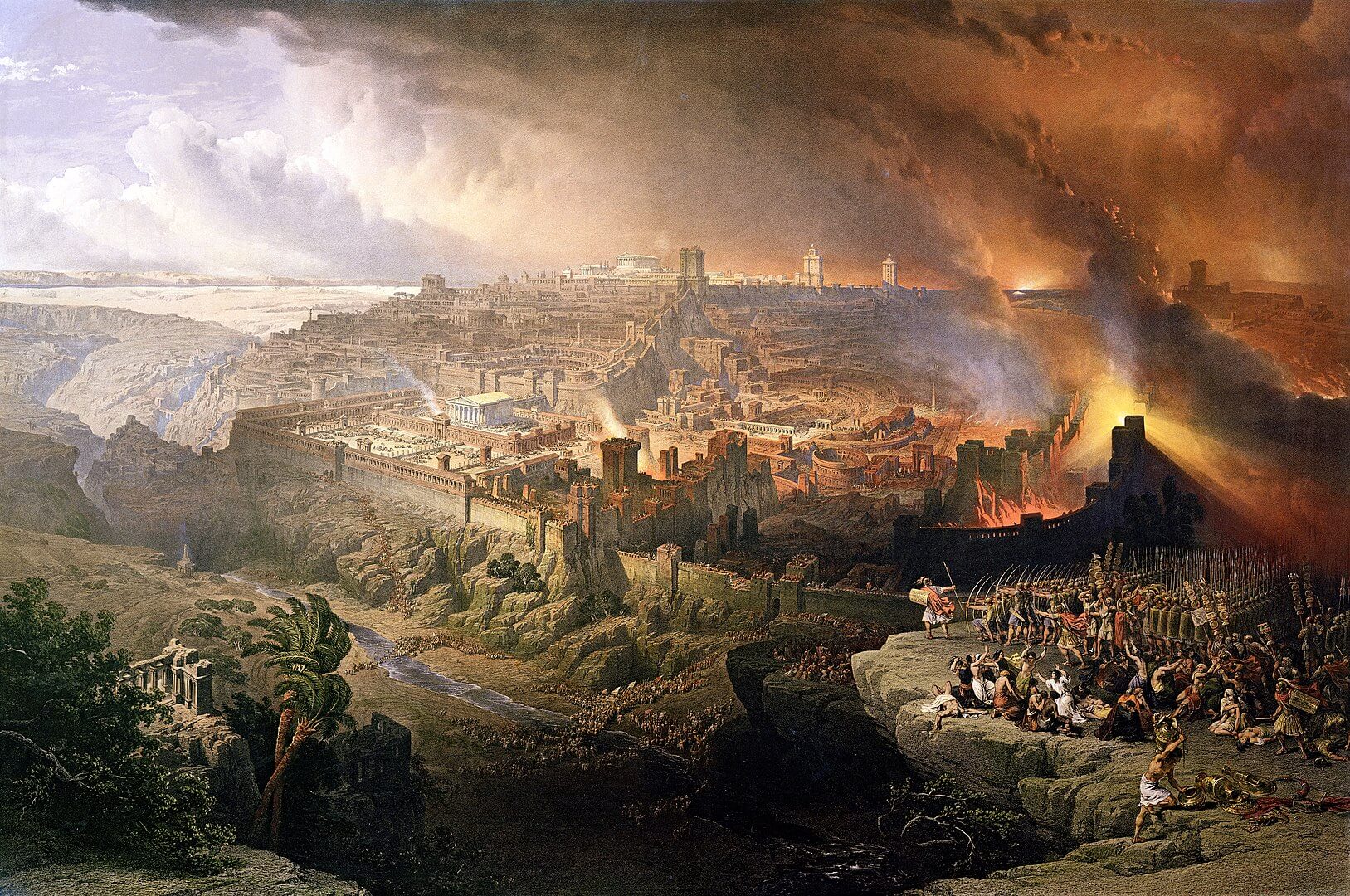 The Siege and Destruction of Jerusalem by the Romans Under the Command of Titus, by David Roberts
The Siege and Destruction of Jerusalem by the Romans Under the Command of Titus, by David Roberts
The books of both Luke and Matthew take from the book of Mark, which is widely considered to have been written first. Most scholars today agree that Matthew was written sometime between AD70 and AD100, not by Matthew himself, but by his followers. If accurately dated, the book is written within recent memory of the destruction of Jerusalem and its Jewish temple by the Romans in AD70.
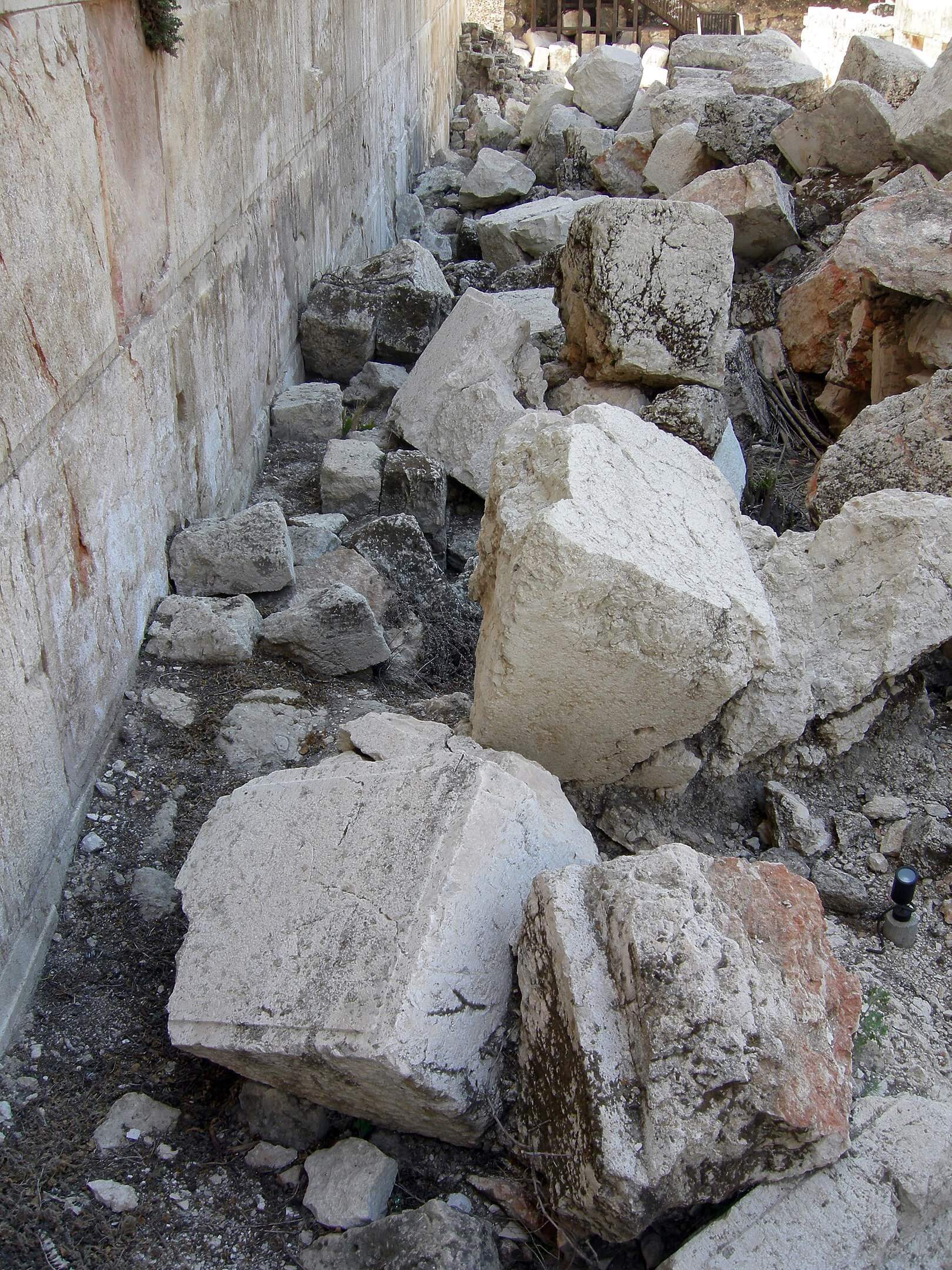 Stones from the Western Wall of the Temple Mount (Jerusalem) thrown onto the street by Roman soldiers in AD70
Stones from the Western Wall of the Temple Mount (Jerusalem) thrown onto the street by Roman soldiers in AD70
In the lifetime of Jesus, His ministry was limited to the land of Judea. Thereafter, the ministry of Matthew was similarly aimed towards Jews. The Gospel according to Matthew begins by carefully detailing Jesus as a descendant of David and Abraham. This is necessary in order for Jesus to be the Messiah spoken of in Jewish prophecy.
Several times in the gospel, Matthew is critical of Jewish Pharisees. But, he is not trying to replace Judaism with a new religion. Instead, he says Jesus is fulfilling Jewish prophecy. He instructs that Jewish scriptures should be more closely adhered to by the followers of Jesus (than they had been by 'hypocritical' Pharisees).
And yet, at the time it was written, a certain separation must have existed between Matthew's followers and many Jews simply because Matthew's followers insisted Jesus was the Messiah. The Gospel ends with the resurrected Jesus instructing “go and make disciples of all the nations". Therefore, Matthew pre-empts the spread of the faith and stands as a bridge between Judaism and the new church. No doubt, this is part of the reason Matthew is the first book of the New Testament instead of the earlier Gospel of Mark.
That the kings come to pay tribute to Jesus in Matthew further fulfils Jewish messianic prophecy. It also positions Jesus as the Son of God for gentiles (non-Jews).
Blagoslov obitelji (family blessing) and the traditions of Epiphany (Bogojavljenje) Three Kings Day in Croatia (Sveta tri kralja)
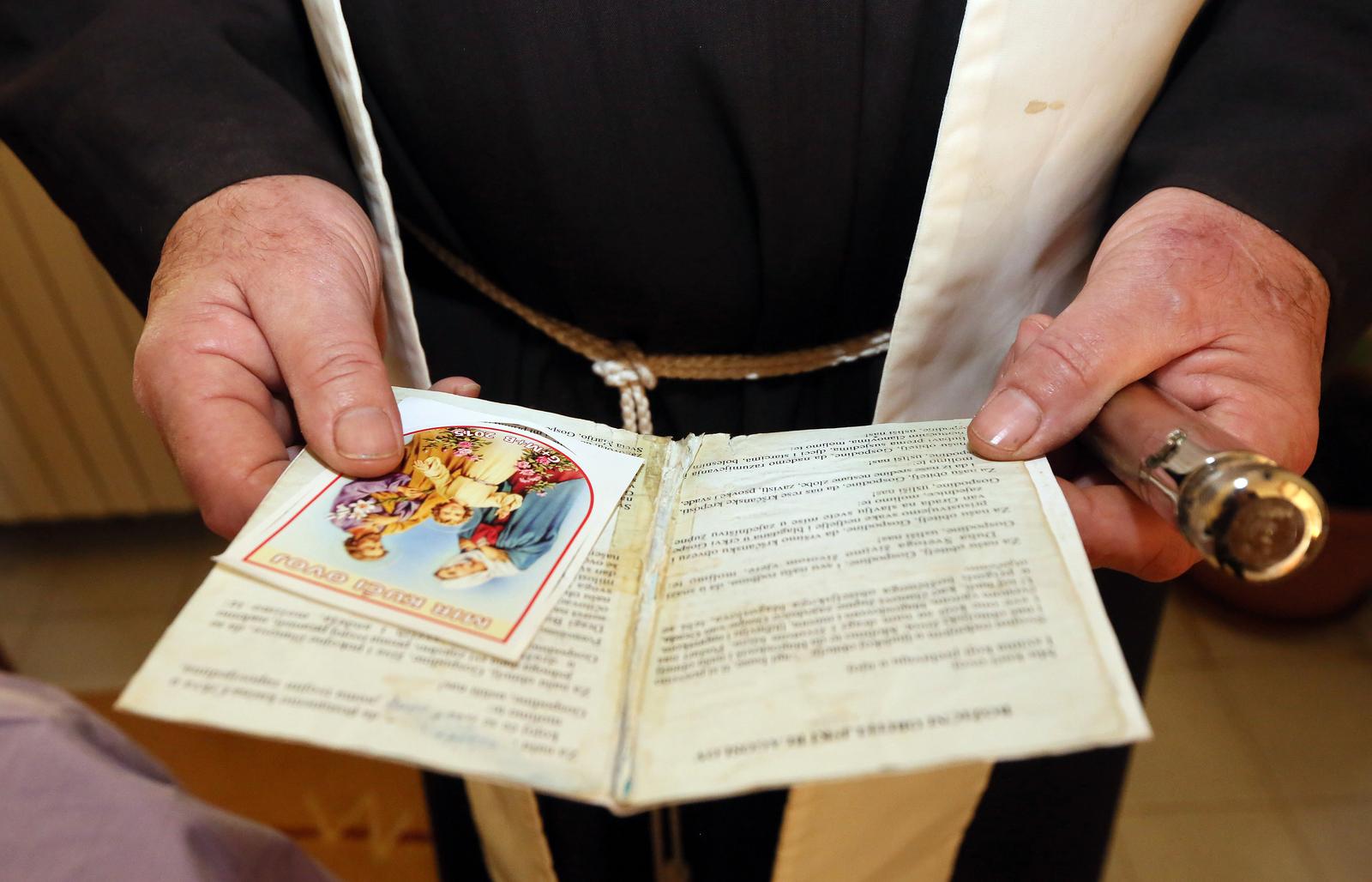 Bogojavljenje aka Three Kings Day in Croatia, by Dusko JaramazPIXSELL
Bogojavljenje aka Three Kings Day in Croatia, by Dusko JaramazPIXSELL
Traditionally, this is the day on which your local priest would visit your home to bless it and the family within. Nowadays, Croatia's population has grown so as to make this impossible. So, in the modern era, the annual blessing of home and family take place between St. Stephen's day (here) and today.
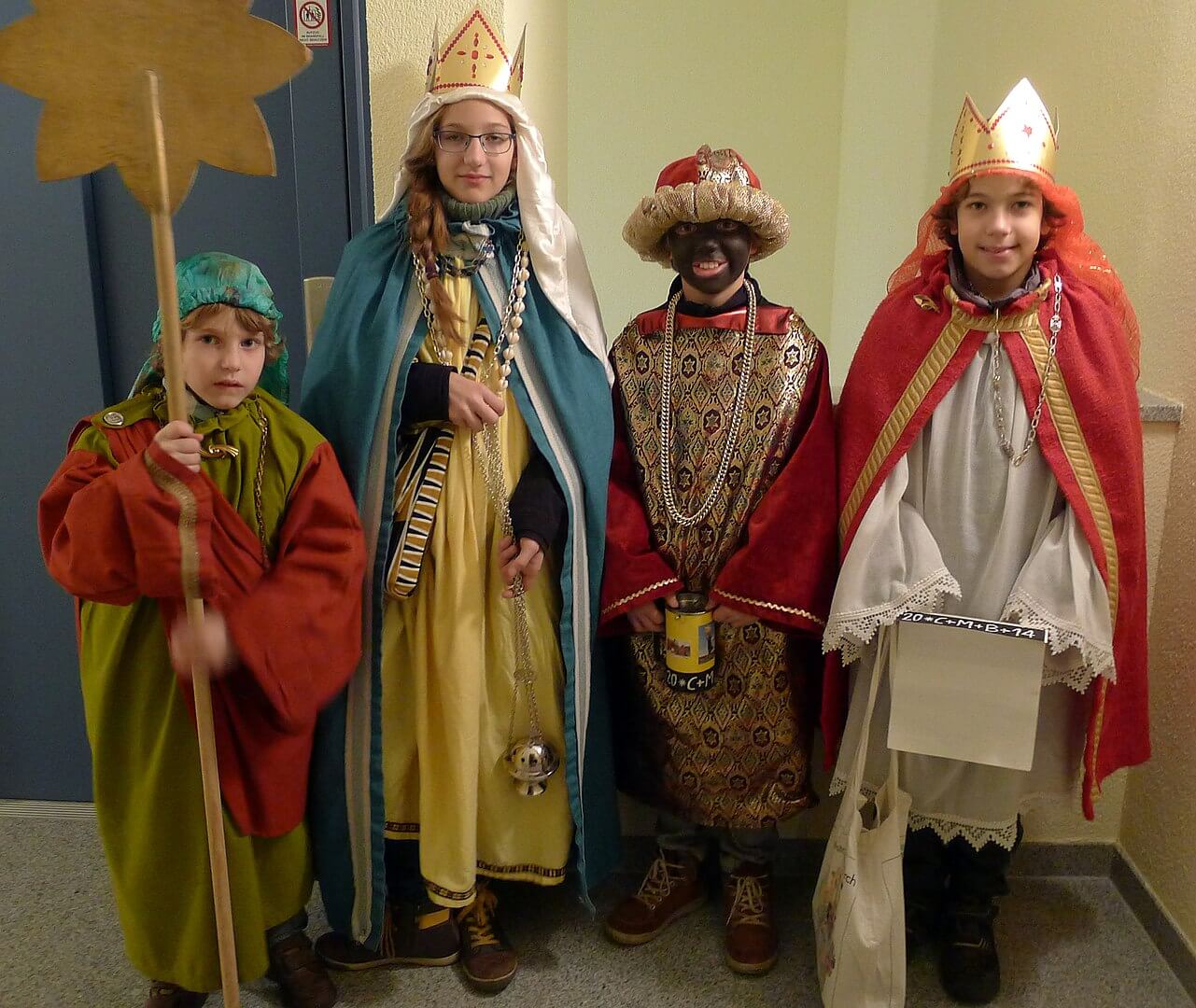 Zvjezdari in Germany, by James Steakley
Zvjezdari in Germany, by James Steakley
This is still a day of Christmas, celebration and decoration. Traditionally, the priest may have been accompanied by altar boys who rang bells to let villagers know they were on their way. These days, the altar boys could be choristers or simply young parishioners. It is not uncommon for them to sing and to be dressed as the Three Kings and carrying a star (Zvjezdari – starmen).
 Collection of stickers marking Blagoslov obitelji (family blessing), awarded on Three Kings Day in Croatia. Note the different spelling of Saint Gaspar (Croatian) / Caspar (Latin)
Collection of stickers marking Blagoslov obitelji (family blessing), awarded on Three Kings Day in Croatia. Note the different spelling of Saint Gaspar (Croatian) / Caspar (Latin)
As part of the home blessing, it was traditional for the priest to sprinkle the home with Holy water. Also, he would write in chalk above the main entrance to the home. The chalked pattern would read 20 ✝ C ✝ M ✝ B ✝ 22 - numbers denoting the year, and the cross separating the letters C (G), M and B. These are the initials of the Magi Caspar (Gaspar), Melchior and Balthazar. They are also an abbreviation of the Latin blessing Christus mansionem benedicat - May Christ bless this house. This chalking of the door signals the home has been blessed for the year and echoes the Old Testament marking of doorways by the Israelites in Egypt. As in Matthew, the tradition of Three Kings bridges Judaism and the new church. Nowadays, the chalk writing has in most instances been replaced by stickers.
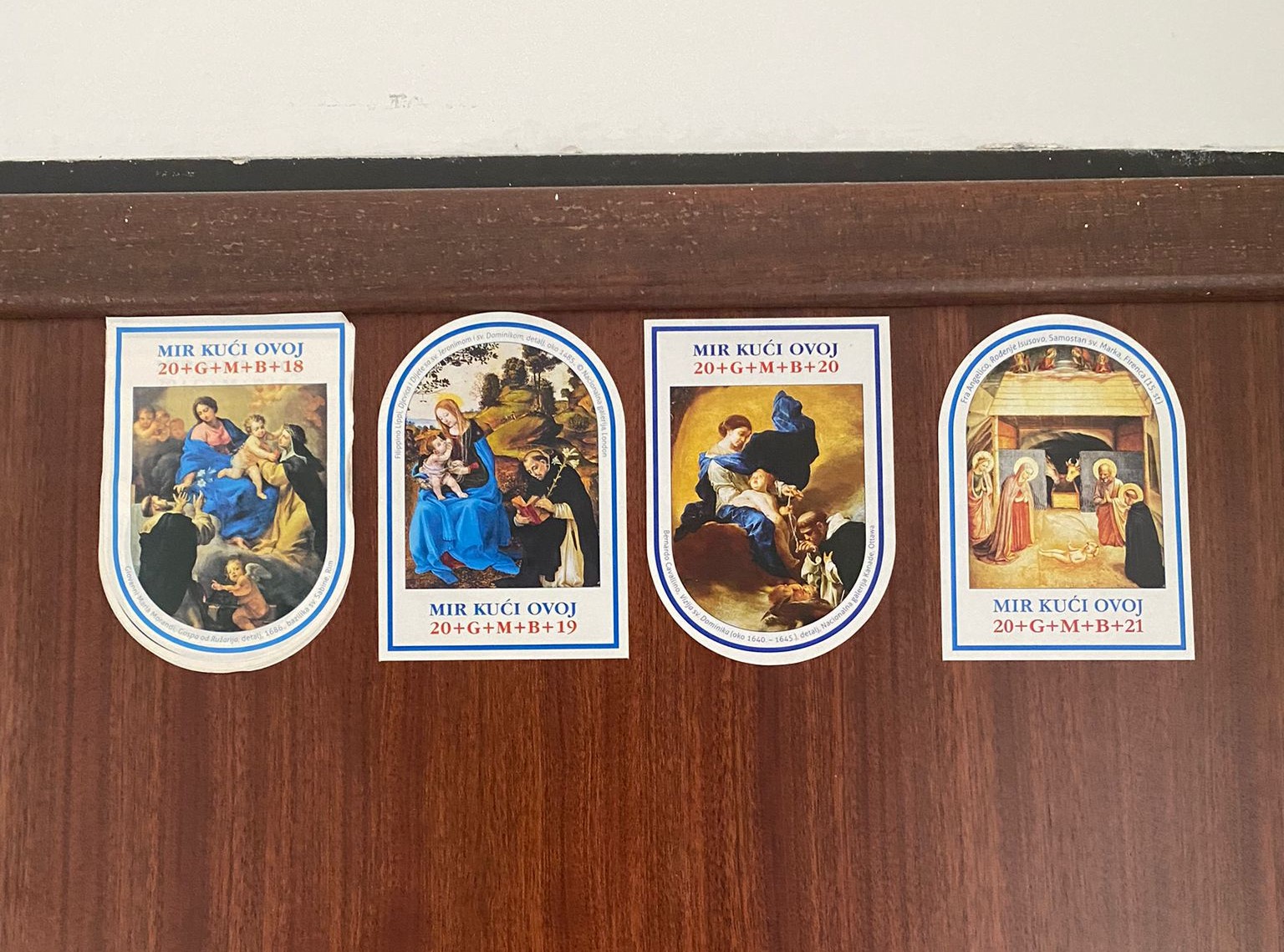 Collection of stickers marking Blagoslov obitelji (family blessing) - these will be added to on Three Kings Day in Croatia
Collection of stickers marking Blagoslov obitelji (family blessing) - these will be added to on Three Kings Day in Croatia
In the distant past of Three Kings visits, a greater significance was put on the blessing of the home and property. But, in order to diminish the supernatural aspect of 'warding off bad spirits from the home', the church has continuously aimed to make the blessing more about the family gathered within. These days, that is reflected in the contemporary wording of the blessing.
This family aspect of the blessing actually goes back an incredibly long way. This time of year is one of the least demanding for those who work in farming or agriculture. It was easier to gather together the full family for the blessing at this time than at almost any other during the year. This tradition still exists – it is customary for the full family to be gathered together when the priest visits.
Another tradition that persists is the cleaning of the home prior to the visit. Although, this is not only because the priest is coming. Remember, Bogojavljenje is Jesus's revelation as the Son of God to all those outside Judea and Judaism – as represented by the Three Kings.
The Three Kings give the gifts of frankincense (signifying his origin from God), gold (signifying his royal status on earth) and myrrh (a balm, signifying that Jesus is a man). The cleaning and blessing of the home welcomes Jesus into Croatian home – as a man he walks among us.
In the modern era, it is customary for the family to give a monetary donation to the priest at the time of the visit. This is not traditional nor is it 'payment' for the blessing or visit. God's blessing cannot be bought or paid for, and is not denied to anyone who asks for it - whether he had money or not. That the traditional annual donation takes place on this visit is a matter of convenience.
Non-Croatian traditions of Epiphany (Bogojavljenje) Three Kings Day in Croatia (Sveta tri kralja)
 Christmas tree recycling, by Ruff tuff cream puff
Christmas tree recycling, by Ruff tuff cream puff
Bogojavljenje is one of the oldest Christian holidays marked in the Croatian Catholic calendar. The fact the day remains a national holiday in Croatia attests to its continued importance.
The laziest and most incorrect contemporary 'custom' attributed Croatian Bogojavljenje is that it's the day you should throw out your Christmas tree and take down your decorations. Wrong. The second biggest modern error is to regard Bogojavljenje as the end of Christmas.
The Christmas tree is not a traditional part of Croatian Christmas. It is German. Its widespread popularity only really began from around 1850 in the UK (thanks to their German monarchy importing it) and from 1870 in the USA. Only after that did the custom travel internationally. To regard the discarding of Christmas trees as a fundamental part of a centuries-old tradition displays an extremely limited and shallow knowledge of Croatian traditions.
In fact, it is Croatian tradition for the local priest to visit the family with the home still decorated. Typically, the priest was fully embraced into the family Christmas setting when he called – jaslice (nativity), candles, log fire, decorations and all. In the past, the priest was usually offered food and drink from the family. In many instances, they would all enjoy the seasonal food together.
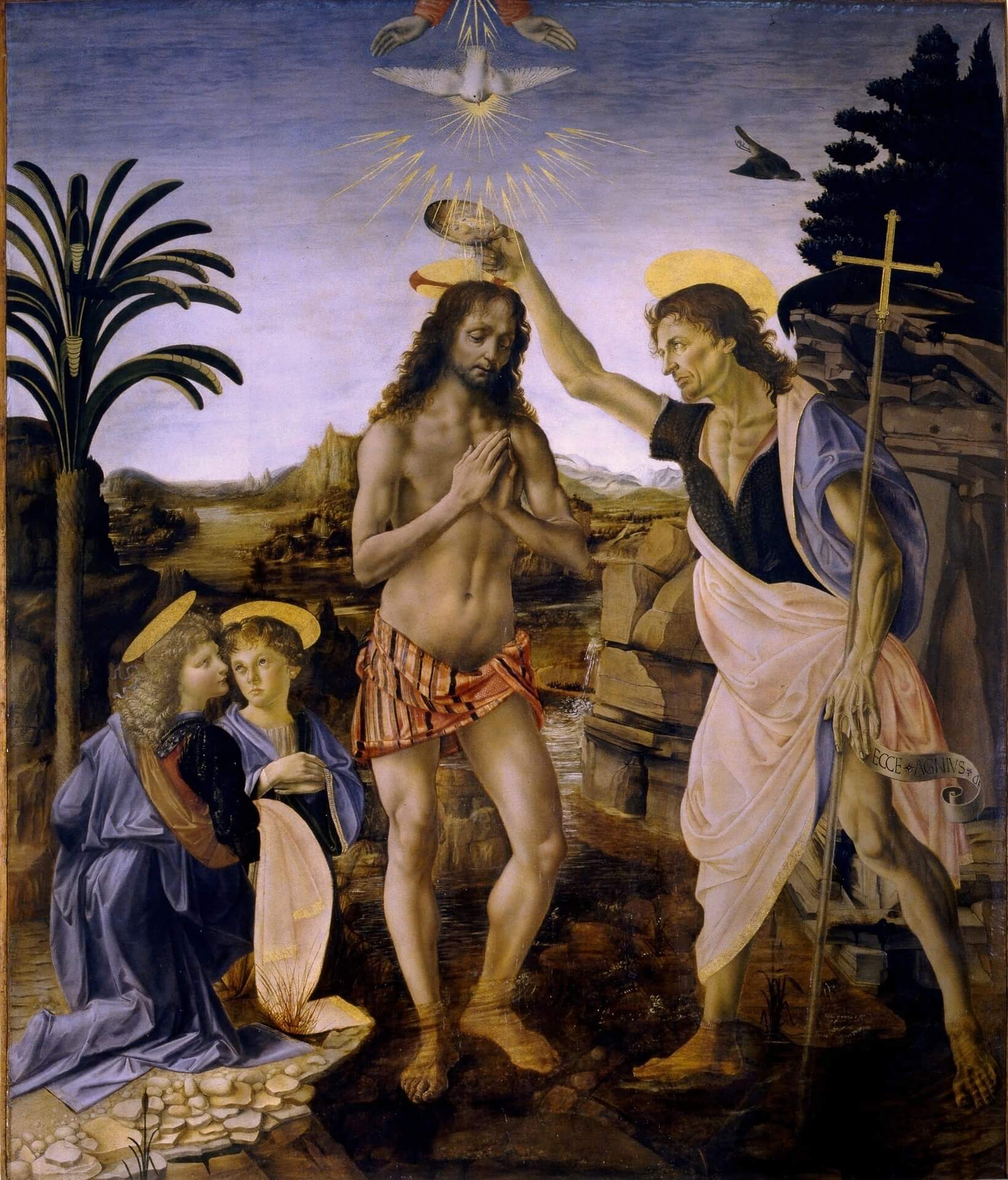 Baptism of Christ, by Leonardo DaVinci
Baptism of Christ, by Leonardo DaVinci
Advent starts on the fourth Sunday before Christmas and ends on Christmas Eve (here). Christmas begins in the evening of Christmas Eve. Like elsewhere, Epiphanytide begins on Three Kings Day in Croatia. But, that does not mark the end of Christmas. In fact for Catholics, Christmas ends officially on the Feast of the Baptism of the Lord, celebrated on the Sunday after Epiphany - Three Kings Day in Croatia (in 2022, Sunday 9 January).
Accordingly, the most traditional of Catholic houses and churches in Croatia can be seen displaying their decorations until then. Three Kings does mark the end of the '12 Days of Christmas', but this is a secular duration of Christmas and has little to do with Croatian tradition.
With grateful thanks to Iris Ćelić, family Kutleša / Marinić, Pater Ivan Dominik Ilicic and Marko Čurković
Traditional School "Window Concert" of Christmas Carols Held in Vinkovci
ZAGREB, 20 Dec 2021 - The Vinkovci Josip Runjanin Music School on Sunday held its traditional Christmas Carols concert with about 150 current and former students and teachers of the school participating in the event.
The concert with singers standing by the school windows is traditionally organized on the fourth Advent Sunday, and only last year the COVID-19 pandemic prevent the organization of the concert
This year's traditional Christmas carols concert also paid tribute to the composer of the Croatian anthem, Josip Runjanin, in memory of the 200th anniversary of his birth in this eastern Croatian city. The music school in Vinkovci is also named after him.
"I don't think anyone in Croatia has something like this. We all got together and unified around this project which has grown into a traditional event with former and current students and teachers and Vinkovci citizens to give this city a present it deserves," the school principal Dinka Peti said.
The concert "Let there be Music..." was staged with the choir standing along with the high school's windows while the orchestra played on the plateau in front of the school with a large audience attending, including Mayor Ivan Bosančić.
"This is one very beautiful event which makes us all proud and which ushers in the Christmas holidays. As we can see a large number of our citizens turned up and I am pleased that Vinkovci has been recognized for this concert as something that will enrich us all and make us happy for Christmas," Mayor Bosančić said.
For more, check out our lifestyle section.
Red Cross Croatia Starts Distributing Christmas Gifts to Banovina Children
ZAGREB, 19 Dec, 2021 - The Red Cross Croatia on Sunday started distributing 800 Christmas gifts for children from earthquake-affected and destitute families in Sisak-Moslavina County.
The campaign, launched ahead of the coming holidays and the first anniversary of a strong earthquake that hit the central region of Banovina on 29 December 2020, started on Sunday in Sisak and will continue in the coming days in Petrinja, Glina and Hrvatska Kostajnica.
For more on lifestyle, follow TCN's dedicated page.
For more about Croatia, CLICK HERE.
Festive December Holidays Fun at 2021 Christmas in Ludbreg
December 02, 2021 – From winter walks and cycling to festive lights, farmers markets and the arrival of Saint Nicholas, there's a full calendar of activity and fun at Christmas in Ludbreg
Sitting just an hour's drive northeast of the Croatian capital, the town of Ludbreg is easily among one of the most appealing day trips you can take from Zagreb. And, no more true is that than in the December holiday season.
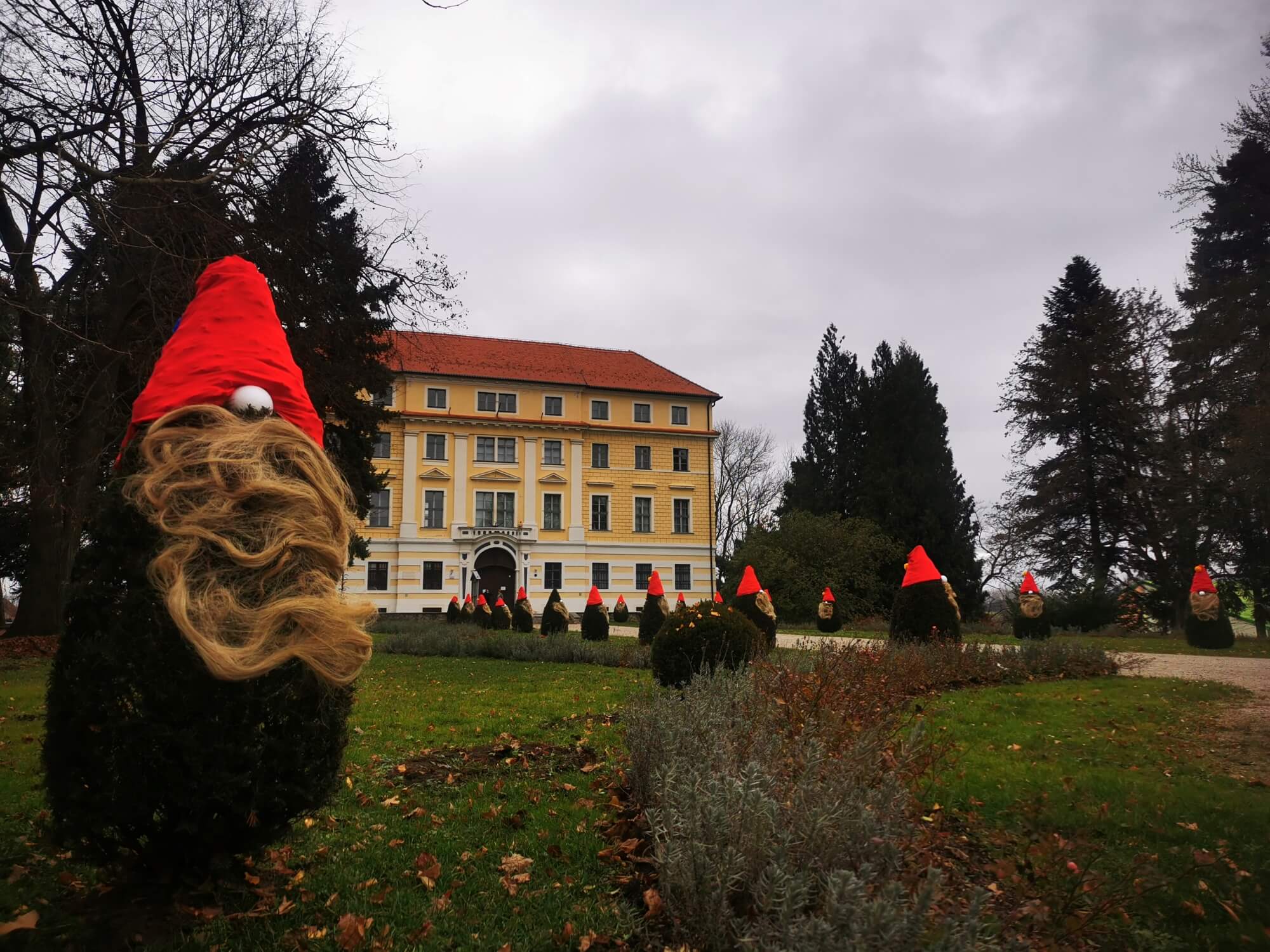 Batthyany castle, Ludbreg, December 2021 © Nikolina Breber
Batthyany castle, Ludbreg, December 2021 © Nikolina Breber
The fields and hills surrounding Ludbreg are today still home to traditional agriculture and winemaking. In the winter season, the families of these farms and vineyards bring the best produce to sell in town. Sparkling with Christmas lights and with seasonal music events adding to the atmosphere, Ludbreg is a great place to pick up a Christmas gift.
But, the nature surrounding the town is not only loved for its produce. Winter and Christmas in Ludbreg is a great time for active events and keeping fit. You can here challenge yourself on a cross country trek or bike race this season.
There are events at Christmas in Ludbreg for everyone. From the youngest family members and their teenage siblings to mom, dad and grandparents too. Here's a look at December's seasonal calendar for Christmas in Ludbreg.
St. Nicholas Day - 5 December - Ciklokros League Ludbreg
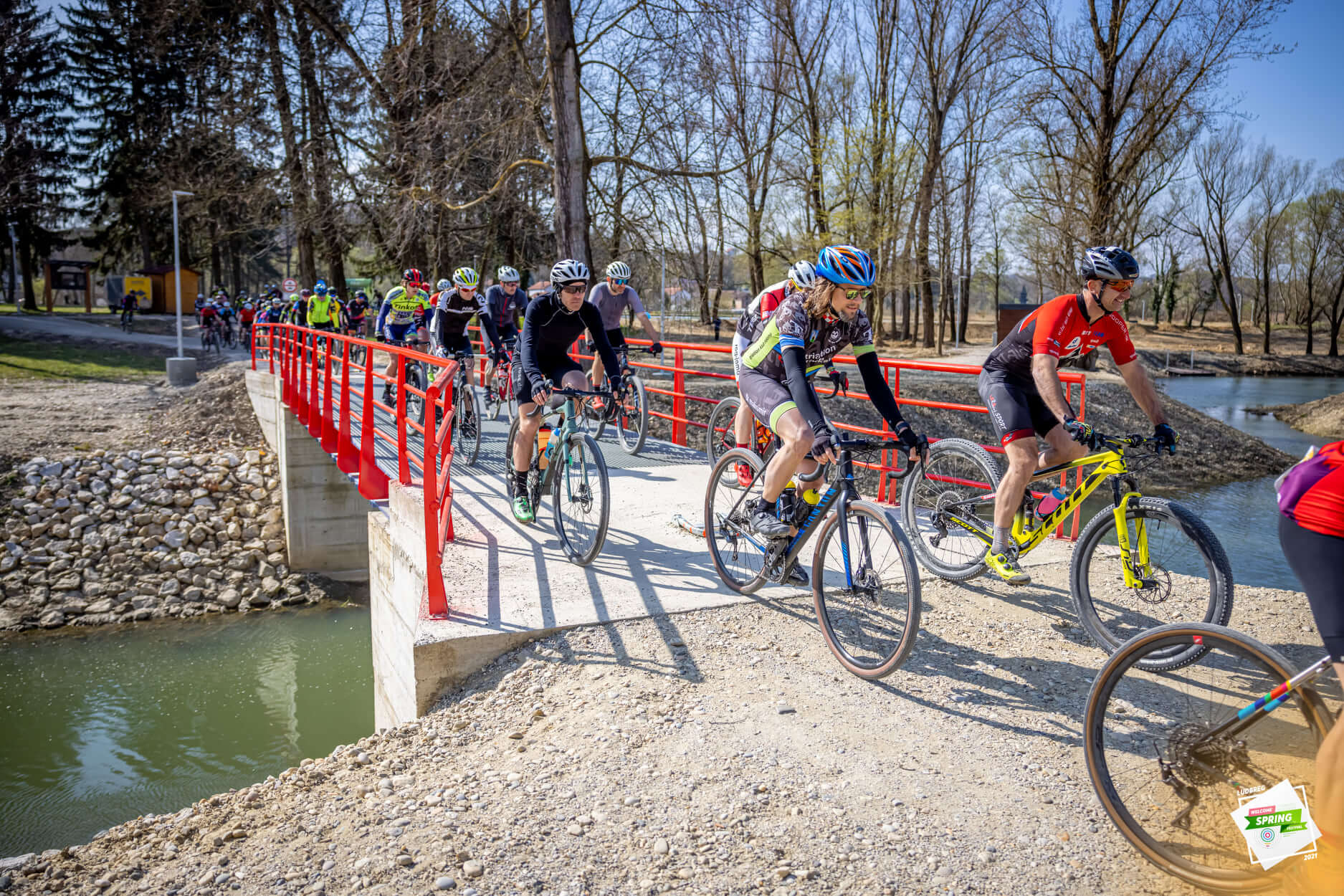 © Ciklokros
© Ciklokros
Following a successful tour in spring, the second round of 2021's Ciklokros League is here. This time, it's a series of seven Sunday races that journey through the stunning Autumn/Winter landscapes of northwest Croatia. And, on 5th December, it's the Ludbreg race.
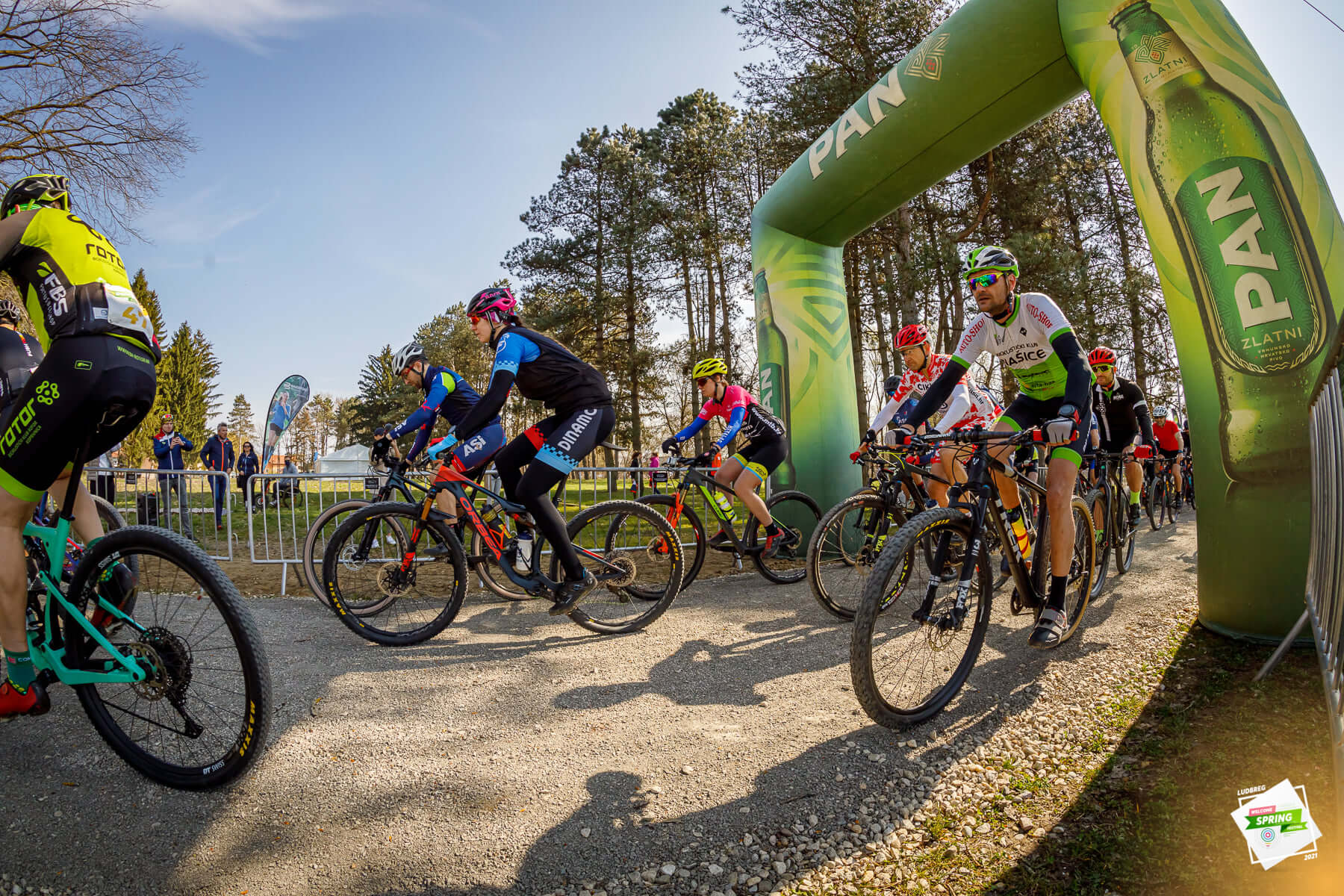 © Ciklokros
© Ciklokros
Cyclists will race successive laps of a 2000 metre course past the waters, lawns and trees of Ludbreg's Otok Mladosti. The fun trail is a mixture of dirt track, grass and course gravel path, unchallenging and perfect for any kind of bmx, mountain bike or cross country racer (more fragile, traditional road racing bikes perhaps wouldn't be so suitable and electric bikes are not permitted). Although keep an eye out – race organisers have placed some obstacles on the route for you to go around.
The event welcomes competitors all ages and abilities, with an initial race starting at 1pm and the second at 1.20pm. You can get more info here and apply to take part here, with the entry fee being just 50 kuna.
St. Nicholas Day - 6 December - Arrival of Saint Nicholas by Horse Drawn Carriage
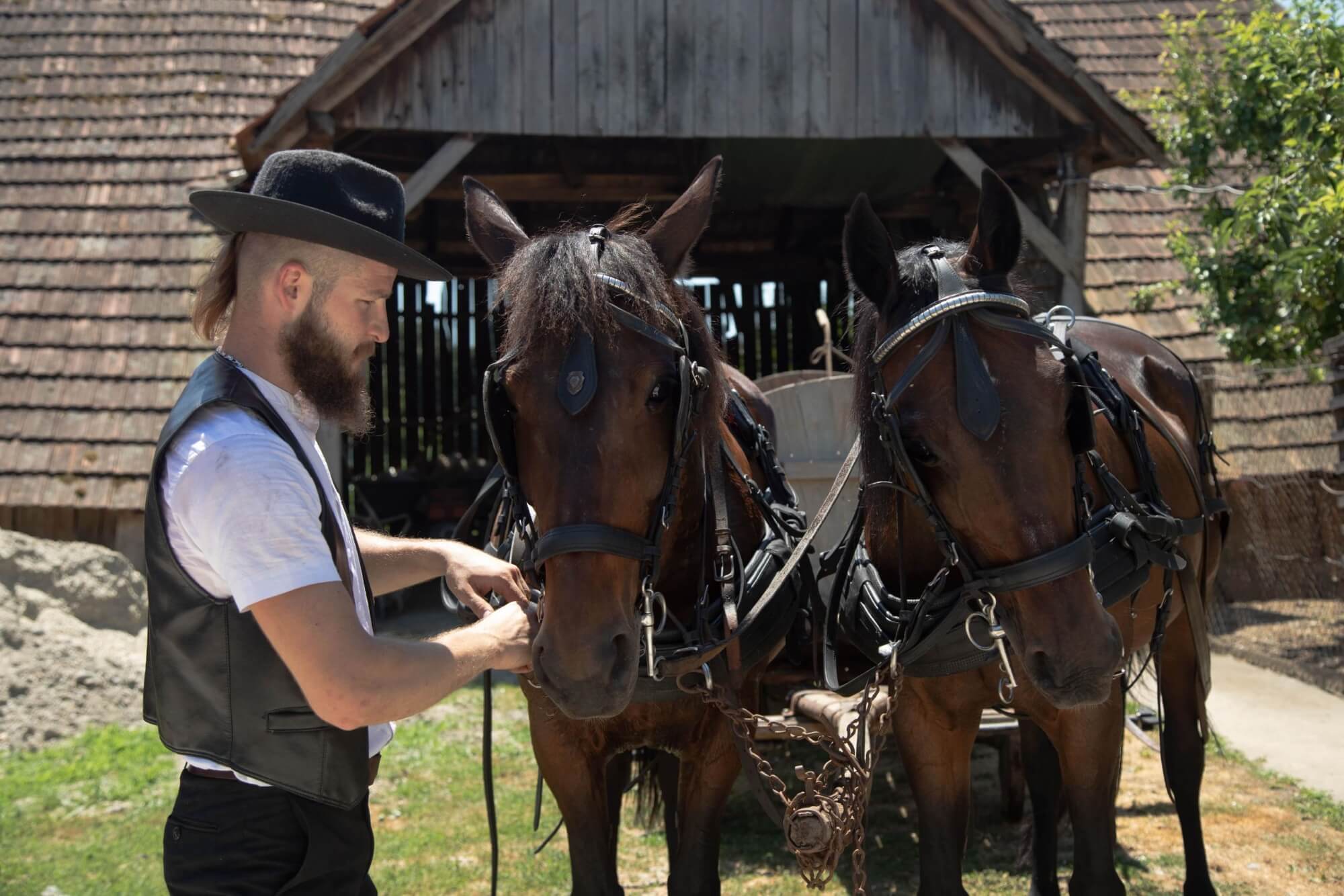 © Matea Maltarić
© Matea Maltarić
Many children have to wait until Christmas Eve for a visit from Santa Claus. But, not the youngsters of Ludbreg. In Croatia, the celebration of Saint Nicholas Day is still observed traditionally on December 5/6th. Often, it's a time of gift-giving. Always, it's a time loved by the young people of Ludbreg.
Of course, Santa usually arrives on a sleigh pulled by reindeer. But, there's simply no guarantee of the necessary snow so early in winter. So, in Ludbreg, Saint Nicholas arrives by horse-drawn carriage. Horses are a much-loved feature of sporting and social events in Ludbreg, with the town's summertime equestrian games now being a decade old.
 © Matea Maltarić
© Matea Maltarić
Because it's his day, Saint Nicholas gets the first ride with the horses. But, after he arrives to greet everyone, his carriage and horses will take youngsters for a ride around Ludbreg. Children and families can arrange horse riding or a tour in a horse-drawn carriage around Ludbreg throughout the year.
Ivana Galić concert at Batthyany castle - 17 December
 Batthyany castle, one of the venues for Christmas in Ludbreg © Siniša Sović
Batthyany castle, one of the venues for Christmas in Ludbreg © Siniša Sović
Despite her young years, singer Ivana Galić already has a performance career that stretches back some 20 years. She has appeared as part of choirs and ensembles and as a soloist at concerts across Europe. In her native Croatia, she is particularly well known for the vocals she lends to black music genres – jazz, soul and gospel. Indeed, she has performed in the UK as a guest of the renowned Birmingham Community Gospel Choir. It is to this gospel genre that Ivana Galić and her quartet return at this special Yuletide concert.
The venue for the concert is Batthyany castle. The focal point of Ludbreg Old Town, the castle today is a fully refurbished version of the opulent residence fashioned here in the 18th century (although, the original castle that stood on this spot is significantly older). What more spectacular setting could you ask for this special seasonal concert? The concert starts at 6pm.
Advent at Christmas in Ludbreg - 19 December
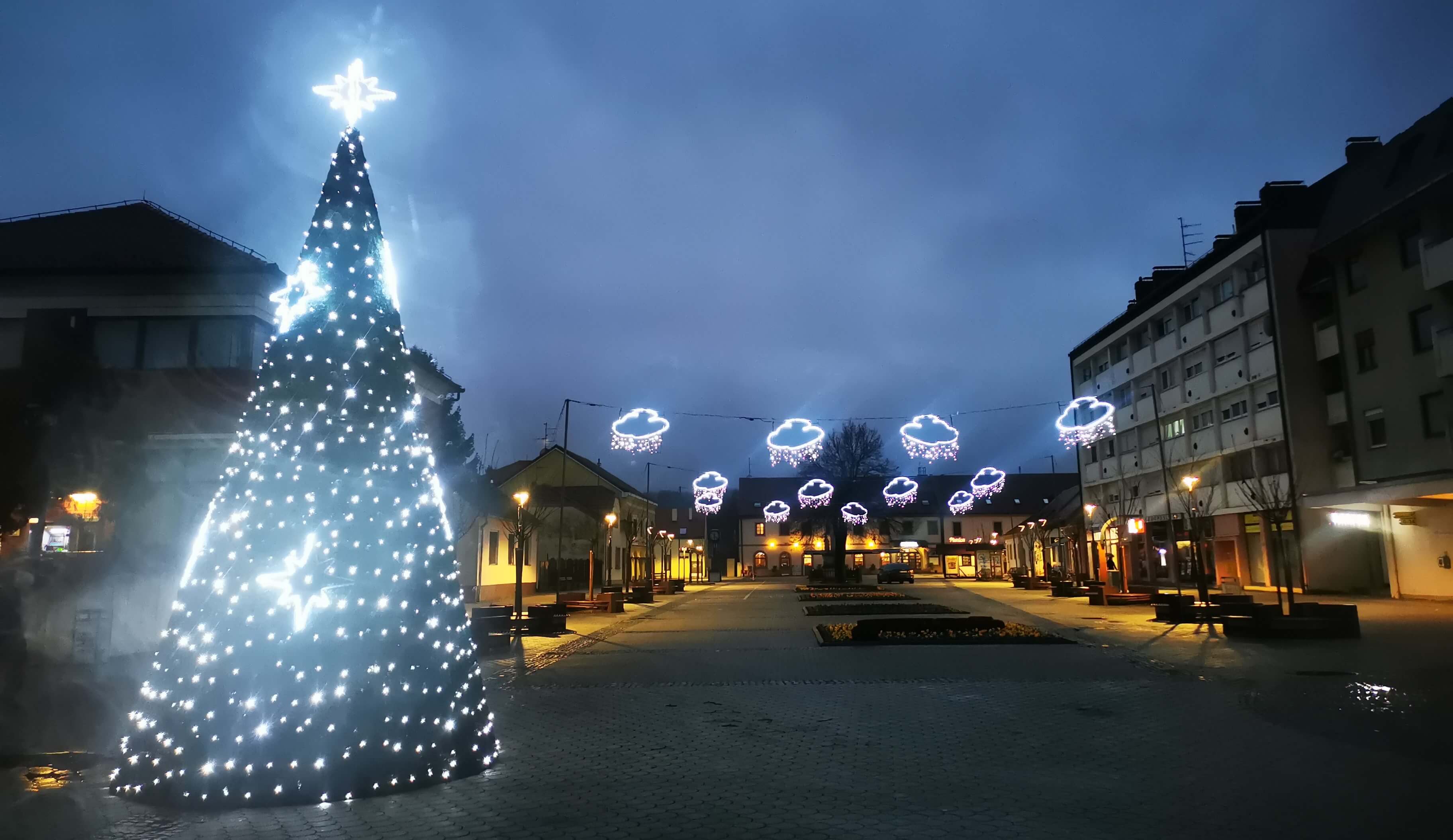 Christmas in Ludbreg 2021 © Nikolina Breber
Christmas in Ludbreg 2021 © Nikolina Breber
Ludbreg is a wonderful town to visit at any time of year. But, during Advent, Ludbreg is particularly quaint and romantic. The town is dressed in flickering, seasonal lights and nowhere is the seasonal spirit better felt than on the parade of huts and stalls of the Christmas market.
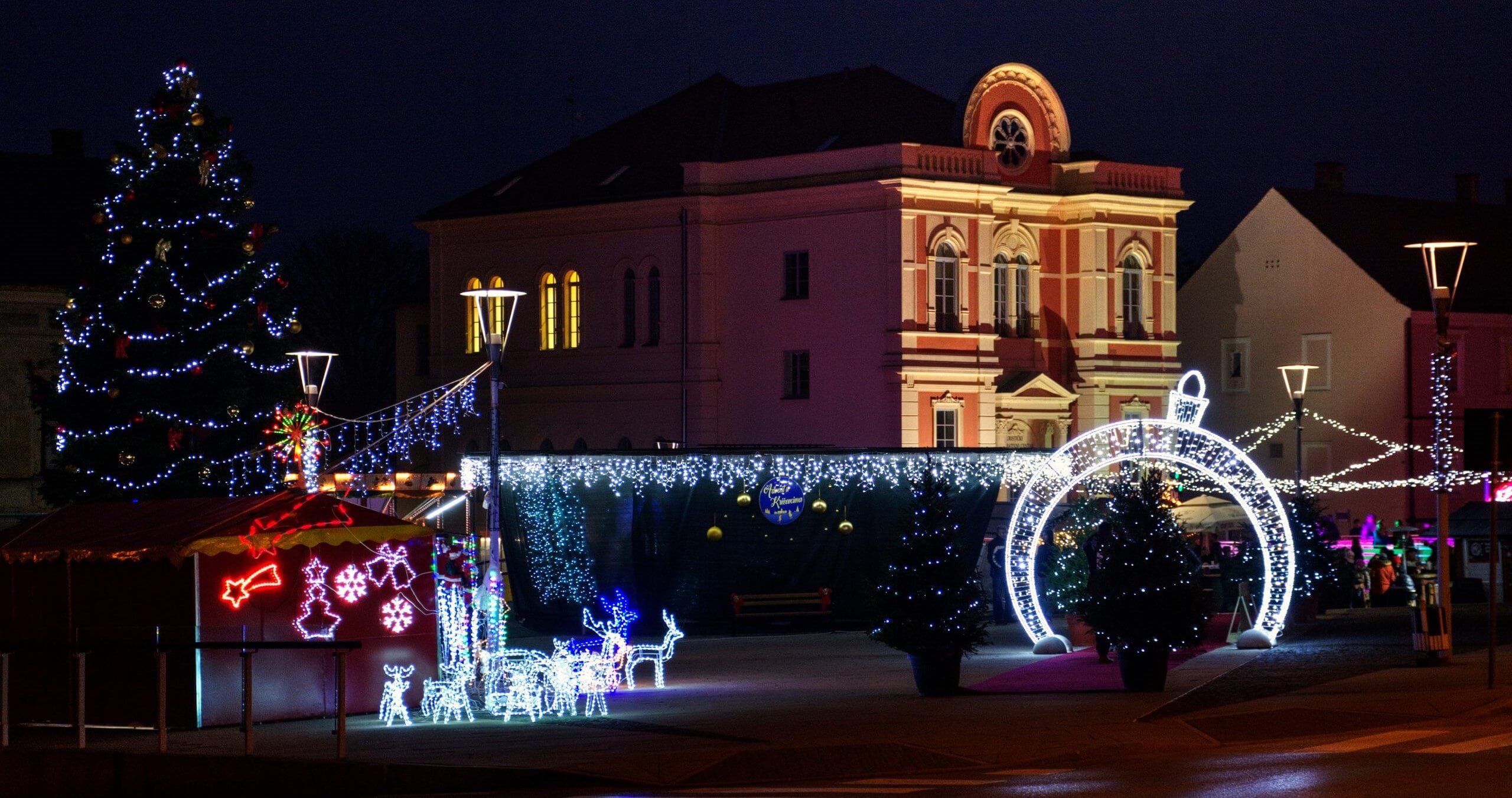 Christmas in Ludbreg © Visit Ludbreg
Christmas in Ludbreg © Visit Ludbreg
This year, scents and flavours of the Christmas season will waft through the Ludbreg air on Sunday 19 December. On the occasion, folks from the surrounding family farms will come to town to show off the best of their seasonal produce. Looking for some authentic, tasty or traditional gifts? This is the place to come.
The Christmas market will start at 13.00 and run until 20.00. In 2021, it takes place in the newly renovated Zanatski trg (Craft square) and on the promenade.
Crazy Hill Trekk 2021 - 19 December
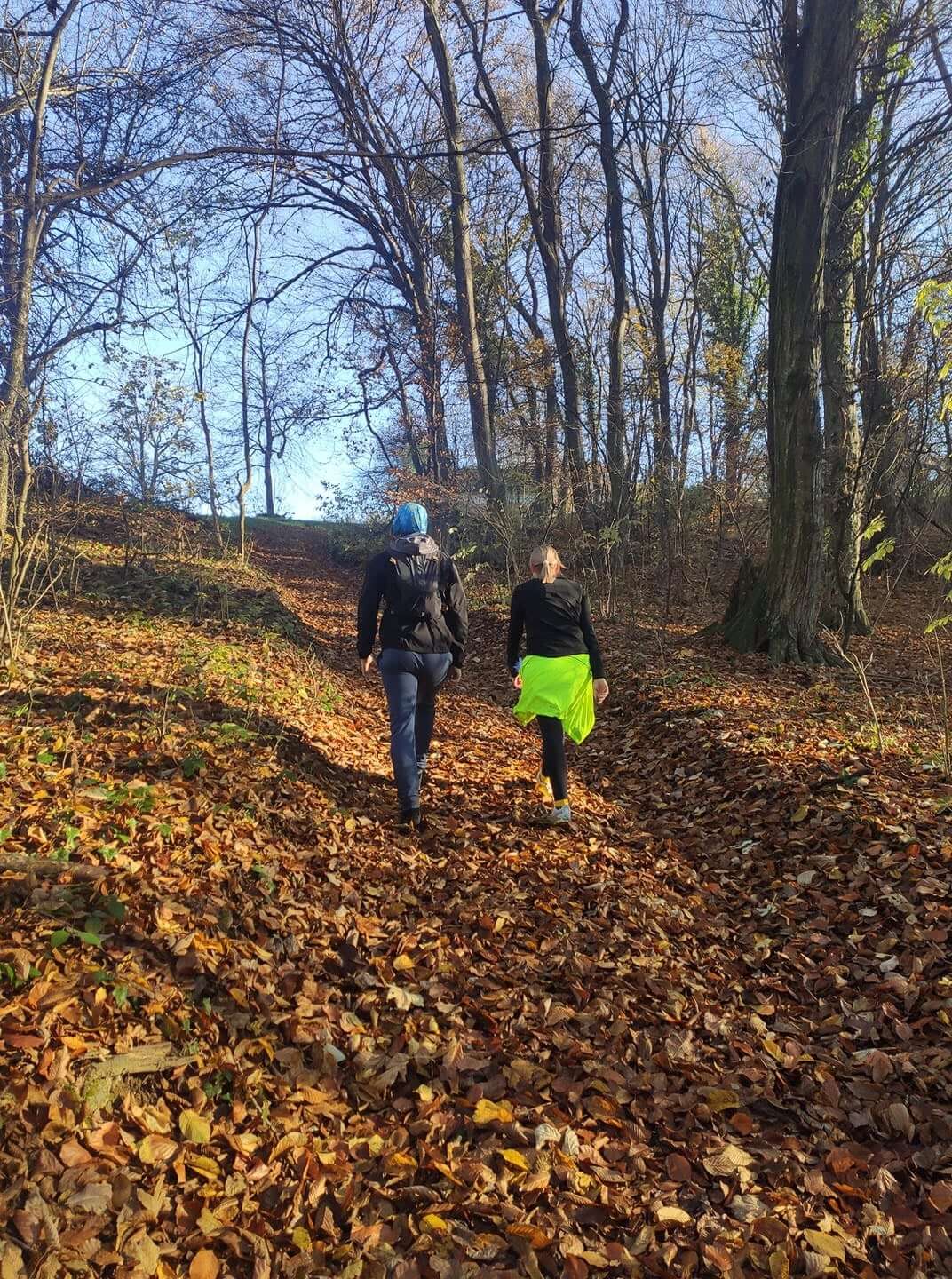 © ŠRD BSV Ludbreg
© ŠRD BSV Ludbreg
Some will wait until January before trying to shift the extra kilograms you gain eating rich Christmas food. Not in Ludbreg, where folks balance fine living with a healthy lifestyle. The cooler winter temperatures are perfect for a little exercise and exertion. That's exactly what you'll get at the second annual Crazy Hill Trekk.
 © ŠRD BSV Ludbreg
© ŠRD BSV Ludbreg
This orienteering trek race will take you through the magical hills and forests that lie on the outskirts of Ludbreg - Vinogradi Ludbreški and Kalničko gorje. As the name suggests, the terrain around Vinogradi Ludbreški is a pretty landscape filled with neat rows of grapevines. Just to the south of Ludbreg a more rugged topography begins to emerge. The peaks of the Kalnik mountains form a natural border between the historic Croatian regions of Zagorje, Prigorje and Podravina. To their west is Zagreb County, to the south and east is Koprivnica- Križevci County and to their north is Varaždin County and Ludbreg. This is an incredible setting for a wintertime expedition.
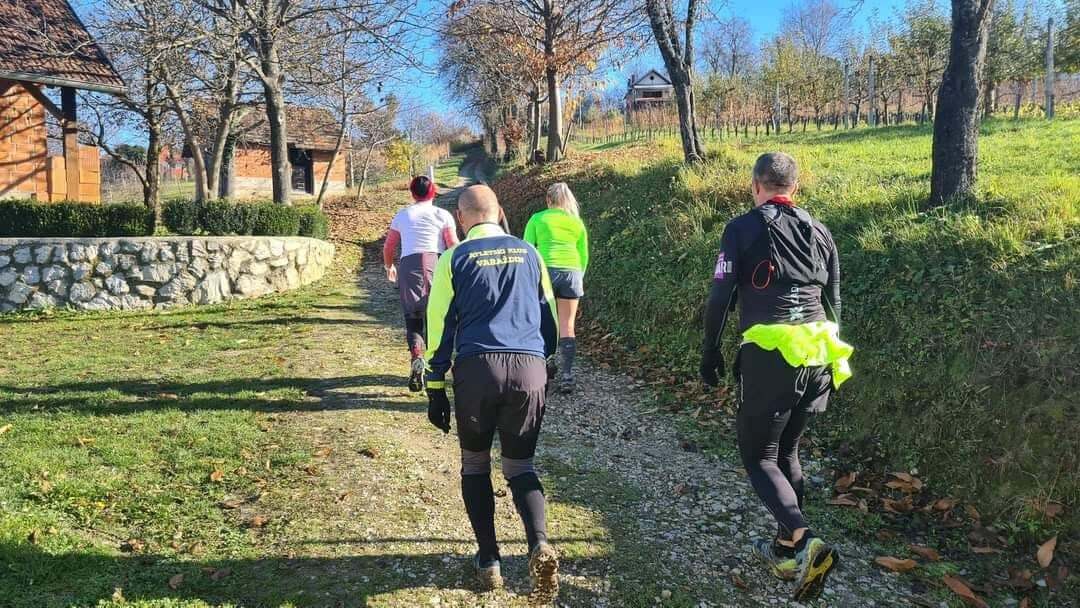 © ŠRD BSV Ludbreg
© ŠRD BSV Ludbreg
The trek welcomes entrants of all abilities and experience. For trekkers who are more prepared and more experienced, there's the 18-20km trail, with a slightly more demanding orientation aspect. For lighter runners and those simply looking for some fun recreation in a fantastic winter setting, there's a 8-10km trail. The former should take much less than the maximum 6 hours set as a time limit, with an equally generous 4 hours set for the latter.
You can find out more about the trek races and apply to enter via here.
When Starts Christmas In Croatia? Decorations Go Up Early Autumn
September 29, 2020 – One surprised shopper couldn't help but laugh and photograph as telltale signs of Christmas in Croatia appeared this week over her local supermarket
As long had been suspected by city residents, it has been officially announced that Zagreb's world-famous Advent celebrations will this year go ahead. Replanned under epidemiological guidelines, kućice (small vending houses), stages and spectacular lights will once again bring the sights, scents, sounds, tastes and cheer of the festive season to the capital this December.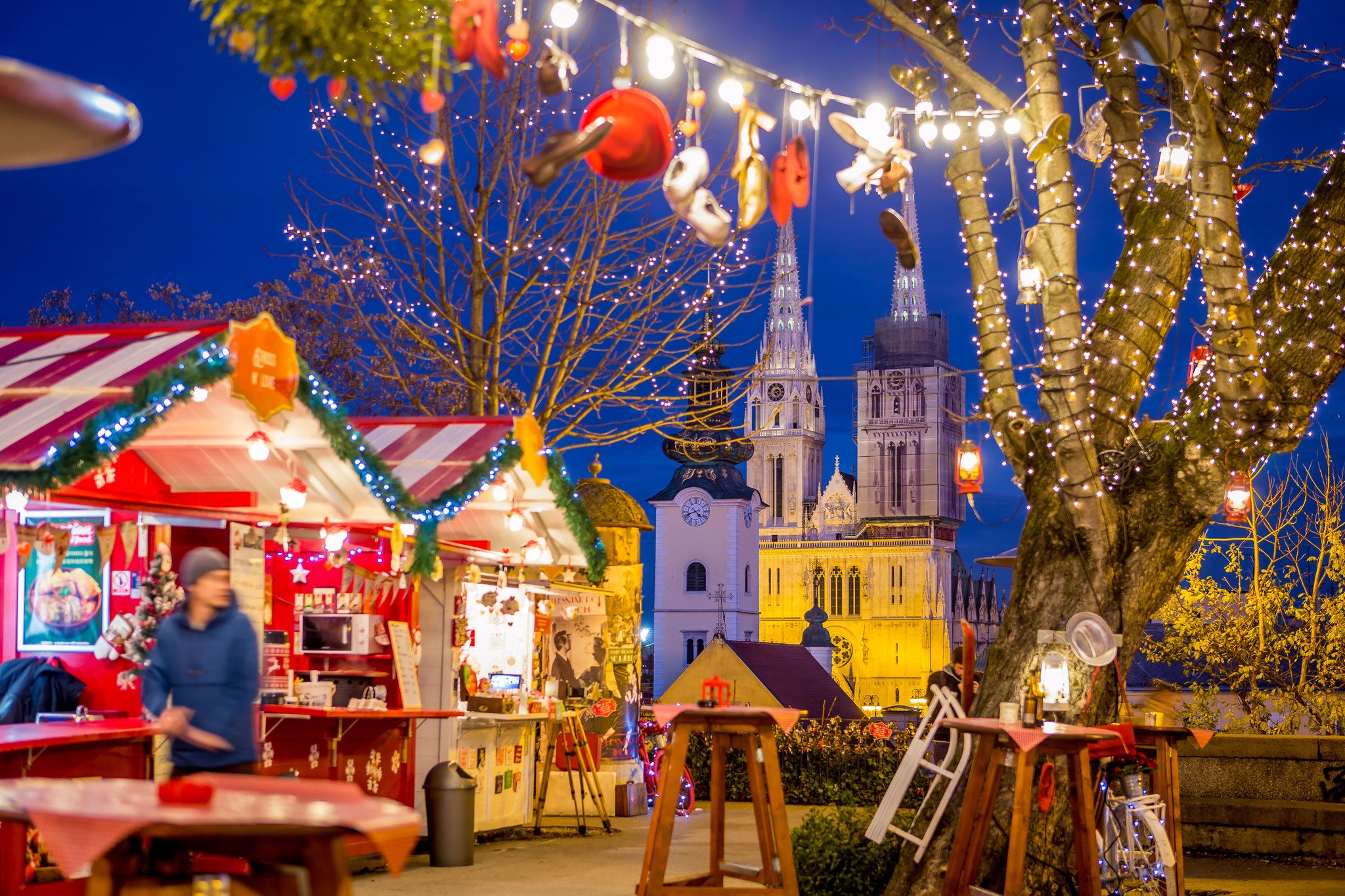 Advent in Zagreb © Julien Duval
Advent in Zagreb © Julien Duval
In the era of Coronavirus, you might be able to ask people to be a bit quieter on their nights out, but there is absolutely no chance you can hold back Christmas in Croatia.
With Zagreb Advent now lasting for over one month - from the last day of November to the end of January's first week - the festive season is already stretched quite far, perhaps reflecting just how much residents enjoy Christmas in Croatia. But, this year, the marking of Yuletide has started earlier than ever before.
The setting of the late summer sun seems to have been the signal for one supermarket to begin bringing in the Christmas cheer. One surprised shopper couldn't help but laugh and photograph yesterday when she saw that Christmas decorations had already appeared over her local supermarket in Dubrava, east Zagreb. It is only the first week of autumn. If you are invited into someone's home over Christmas in Croatia, you simply must go - the atmosphere and food are usually fantastic © Pictureday
If you are invited into someone's home over Christmas in Croatia, you simply must go - the atmosphere and food are usually fantastic © Pictureday
Christmas in Croatia is an excellent time to visit. Zagreb's Advent has consistently been voted the best of its kind across Europe. The season of goodwill in the country is one where gifts are exchanged, homes visited, feasts shared and superb culture enjoyed. As a Catholic nation with a strong sense of family, it is also a time where religion is observed and when you get to see all of your relatives. Many visitors to Christmas in Croatia are lucky enough to be invited into the home while they are here, and such an opportunity should not be turned down. Being among family members and friends, eating traditional and homecooked Croatian food is an unforgettable Christmas experience. But, there are some rules.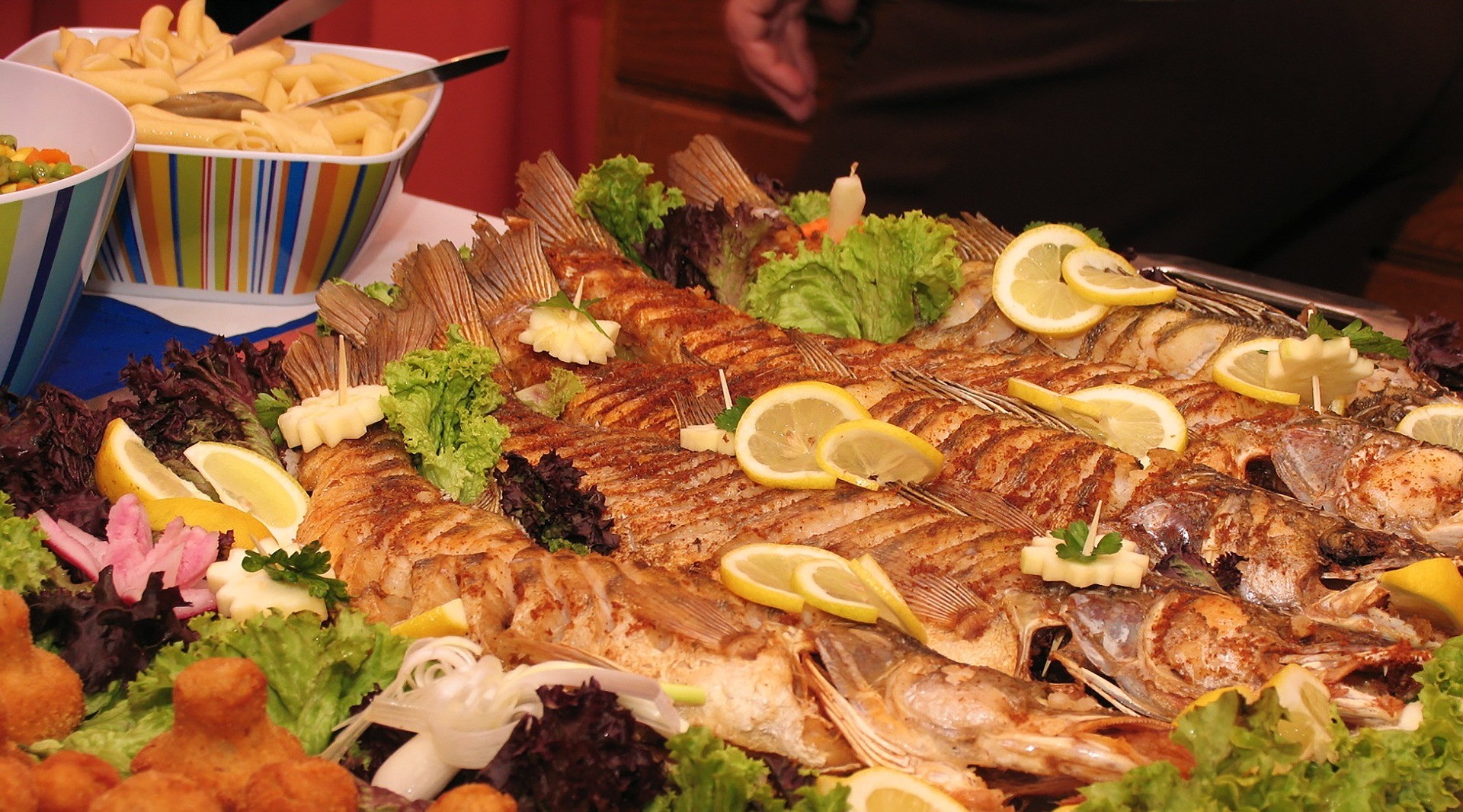 Religious tradition is an integral part of Christmas in Croatia. In almost every home, no meat, only fish, is eaten on Christmas Eve © Vargazs
Religious tradition is an integral part of Christmas in Croatia. In almost every home, no meat, only fish, is eaten on Christmas Eve © Vargazs
In the UK, it's very common to greet friends across many days of December with “Merry Christmas”. You don't do that in Croatia. If you do, you'll be met with a look that lies anywhere between confusion and concern for your mental health. The greeting of “Merry Christmas” is strictly reserved for Christmas Day itself.
The root of this adherence to tradition is doubtless the acknowledgment that Christmas in Croatia is, above all, a religious festival. Croatians are often more attuned than most to commercialism creeping into what remains a deeply-observed marking of Jesus's birth. Yet, somehow, this most sacred of Catholic holidays manages to comfortably sit, side by side with seasonal celebrations that extend further each year. Although, the first week of autumn as the start of Christmas in Croatia must be the earliest one yet.
For the latest travel info, bookmark our main travel info article, which is updated daily.
Read the Croatian Travel Update in your language - now available in 24 languages
Rijeka Advent: Trsat Castle Fairytale Has Begun
December 2, 2018 - Rijeka's most anticipated Advent festivities at the hilltop Trsat Castle officially opened with fireworks!
This evening at 6:00 PM the Trsat Castle complex was once again illuminated with a thousand shimmering holiday lights while dazzling fireworks lit up the sky above the medieval fortress. The ceremonial opening marked the 2nd year of Advent on Gradina whose 2018 program promises to surpass last year's. You can watch the videos below.
As it was expected, the Trsat Castle complex was simply too small for more than 6,000 visitors who came tonight to witness the official opening of the 2018 Advent festivities in Trsat.
The spectacular opening was followed by the concert of Croatia's The Voice winner and Eurosong representative Nina Kraljić who was accompanied by guitarist Miroslav Gugić, and visitors were also delighted to hear the Ri Brass Quintet composed of The Ivan pl. Zajc National Theatre wind soloists Ivica Lukanec, Luka Horvat (trumpets), Vinko Rožić (horn), Marijan Orešković (trombone), and Romano Hantih (tuba) who performed thereafter. In addition, the crowd gathered outside the fortress in front of the newly opened ice skating rink in Nugent Park was entertained by a popular local acoustic trio comprised of Dino Antonić (vocal), Dorian Cuculić (keyboards) and Dino Ivelja (bass guitar).
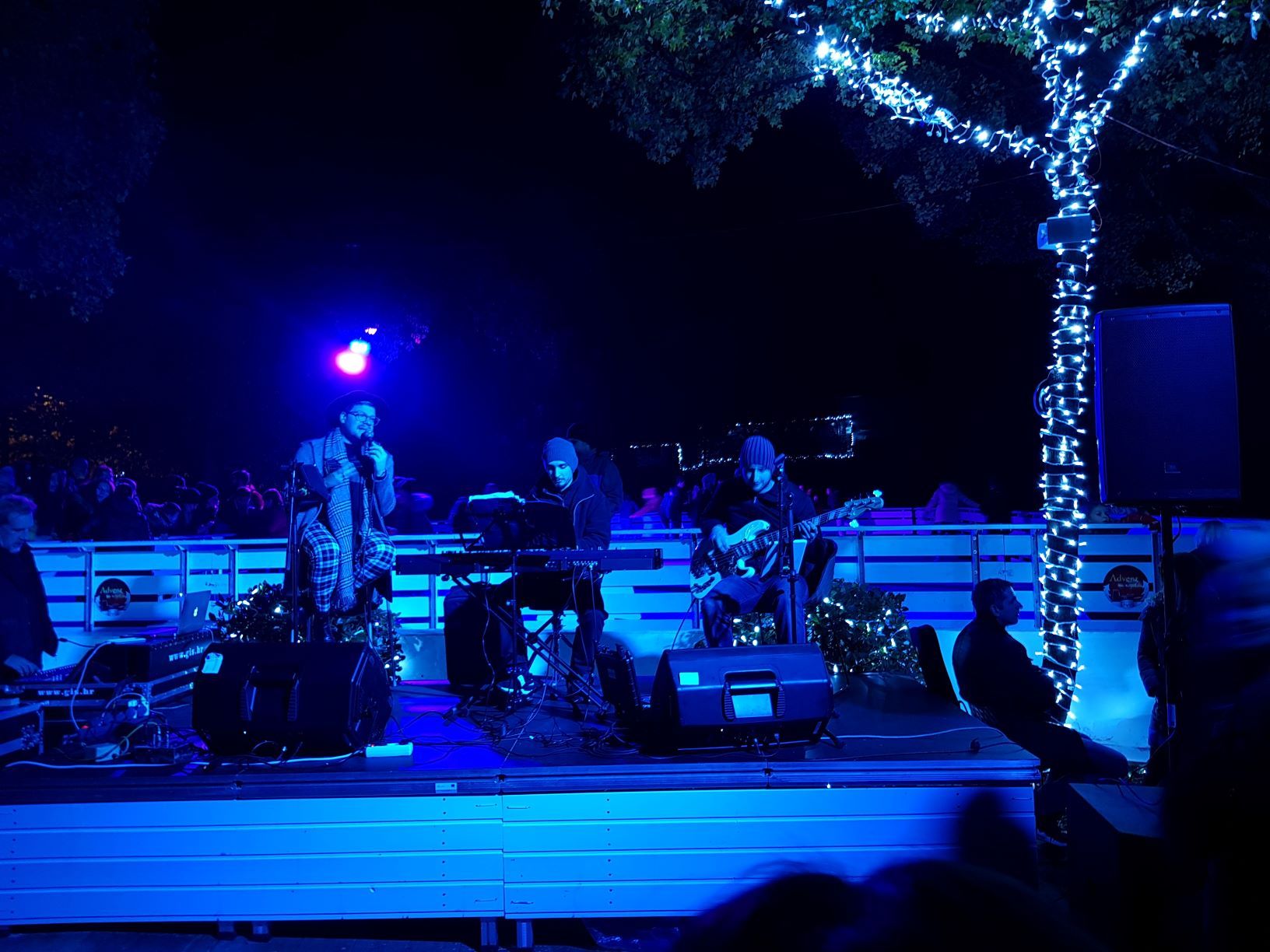
While last year's Advent on Gradina welcomed around 60,000 visitors from all across the region, this year expects to see even more merry attendees.
For more news and updates on the upcoming Advent events in Rijeka make sure you follow the official Advent Rijeka Facebook page, and for more related content on TCN stay tuned by following our dedicated lifestyle page.


